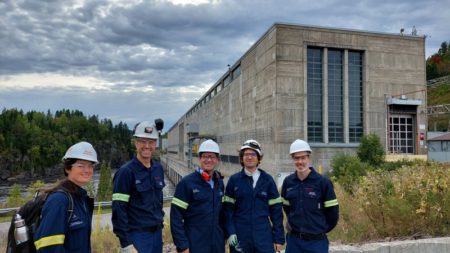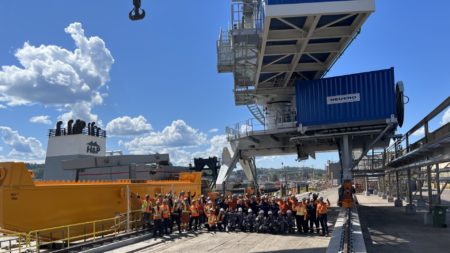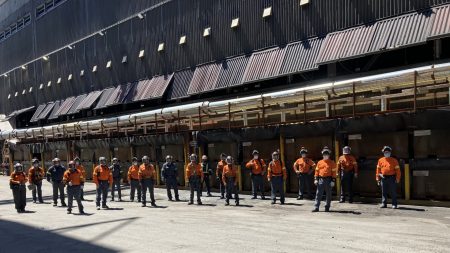Technical Services and Power Operations: Connected to the Health of Our Equipment

The Power Operations Maintenance Energy Centre is dedicated to the optimisation of data collected in hydropower stations. Its mission is to give employees the tools to perform the right interventions on the right equipment at the right time.
To achieve this, the Maintenance Energy Centre uses algorithms, also called “models,” to monitor the health of equipment more accurately. The algorithms can be used to gauge a component’s degree of wear, making it possible to anticipate failures and plan the necessary replacement or maintenance.
Électricité de France (EDF) is a leader in equipment monitoring in the hydropower industry. On 20 September 2022, Technical Services and Power Operations invited three engineers from EDF to visit the regional facilities for the purpose of developing new technical partnerships. During this three-day visit, the EDF team worked with our mechanical, civil, electrical, IT, Industry 4.0 and hydrology experts to draw up a list of potential initiatives.
“Électricité de France is a few years ahead of us in the development of monitoring models for hydropower equipment,” said Martin Gamache, General Manager, Technical Services. “We’re exploring how we can collaborate with them to implement their models in our facilities and purchase some of their technologies. And we’re examining how else we can benefit from their expertise.”
The EDF team uses some of the same software we do, but they’ve also developed their own analysis methods and sensors,” explained Marc-André Lavoie, Analyst Engineer at the Maintenance Energy Centre. “When it comes to the monitoring of mechanical and civil equipment, for example, their technologies could allow us to leap several years ahead.”
“One key advantage is that EDF is not a supplier,” Gamache added. “It’s a hydropower producer and has developed its tools first and foremost for its own use. It has tested its equipment under real-use conditions and is now in a position to share its expertise and development with others.”
EDF also has a much larger quantity of turbine generator units than we find in Saguenay–Lac-Saint-Jean. They have about 1,200 turbine generator units, whereas Power Operations has about 44. They can therefore analyse more events and gather a larger amount of data.
The visit from the EDF engineers was, in short, an important step in the ongoing discussion between the partners.
“The industry is evolving rapidly, and hydropower producers are investing in data science to have a better understanding of the health of their equipment,” said Lavoie. “Establishing technological partnerships will allow us to benefit from outside experience and make improvements in speed and efficiency.”


